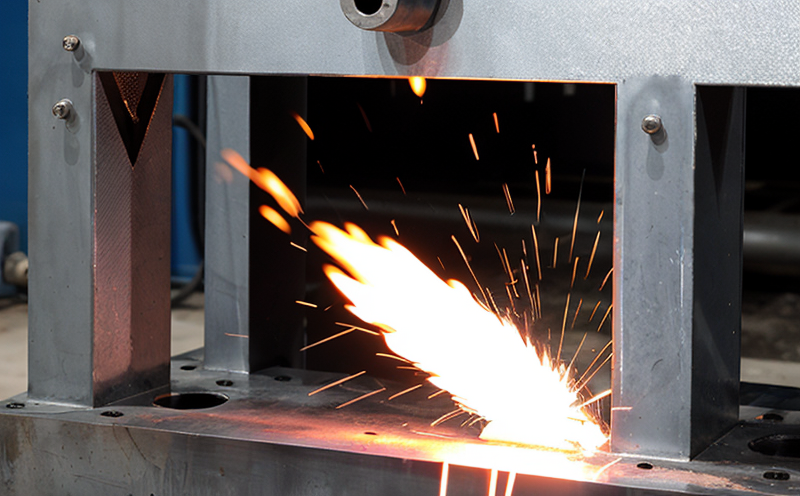Fatigue testing of welded joints
The Crucial Role of Fatigue Testing of Welded Joints in Ensuring Product Reliability and Safety
As the world becomes increasingly reliant on complex systems and structures, the importance of ensuring their reliability and safety cannot be overstated. One critical aspect of this endeavor is the fatigue testing of welded joints a laboratory service provided by Eurolab that plays a vital role in preventing catastrophic failures and ensuring public trust.
Fatigue testing of welded joints involves subjecting these critical connections to repetitive loading cycles, simulating real-world conditions, to assess their ability to withstand stress without failing. This process is essential for industries such as aerospace, automotive, oil and gas, construction, and more, where the integrity of welds can have far-reaching consequences.
In this article, we will delve into the significance of fatigue testing of welded joints, highlighting its benefits and exploring the advantages it offers to businesses. By understanding the importance of this service, organizations can make informed decisions about their product development and quality control processes.
Advantages of Fatigue Testing of Welded Joints
The fatigue testing of welded joints is a non-destructive evaluation technique that provides numerous advantages over traditional testing methods. Some of these benefits include
Improved Product Reliability By identifying potential weaknesses in welds, manufacturers can modify their design and production processes to ensure the reliability of their products.
Enhanced Safety Fatigue testing helps prevent catastrophic failures, which can result in serious consequences for human life, equipment, and the environment.
Reduced Costs Identifying and addressing issues early on saves time and resources that would be spent on repairing or replacing failed components.
Compliance with Regulations Conducting fatigue testing of welded joints ensures compliance with industry standards and regulatory requirements, reducing the risk of product recalls or liability claims.
Some key benefits of fatigue testing of welded joints can also be summarized as follows
Key Benefits
Reduced Maintenance Costs By identifying potential issues before they become major problems, businesses can save money on maintenance and repairs.
Increased Efficiency With a better understanding of their products performance under various conditions, manufacturers can optimize their production processes, leading to increased efficiency.
Improved Customer Satisfaction Ensuring the reliability and safety of products leads to higher customer satisfaction rates and loyalty.
Competitive Advantage Companies that prioritize product quality and safety through fatigue testing of welded joints can differentiate themselves from competitors.
QA Section
What is Fatigue Testing, and How Does it Relate to Welded Joints?
Fatigue testing involves subjecting materials or components to repetitive loading cycles to assess their ability to withstand stress without failing. In the context of welded joints, fatigue testing simulates real-world conditions to evaluate the integrity of these critical connections.
What are the Key Factors Influencing Fatigue Testing Results for Welded Joints?
Several factors can impact the results of fatigue testing for welded joints, including material properties, joint configuration, loading conditions, and environmental factors. Understanding these variables is crucial for obtaining accurate and reliable test results.
How Does Eurolabs Fatigue Testing Service Differ from Others in the Industry?
Eurolabs fatigue testing service is designed to provide a comprehensive understanding of welded joints performance under various conditions. Our state-of-the-art equipment, experienced team, and rigorous quality control procedures ensure that our clients receive accurate and reliable results.
What Types of Industries or Applications Benefit Most from Fatigue Testing of Welded Joints?
Industries such as aerospace, automotive, oil and gas, construction, and more can benefit significantly from fatigue testing of welded joints. This service is particularly crucial for applications where safety and reliability are paramount, such as in high-performance systems or under extreme environmental conditions.
How Long Does Fatigue Testing Typically Take, and What Is the Turnaround Time?
The duration of fatigue testing depends on various factors, including test parameters, equipment availability, and the complexity of the project. Eurolab strives to provide fast turnaround times without compromising on quality or accuracy.
Can You Provide Examples of Successful Applications of Fatigue Testing in Welded Joints?
Yes, we can share case studies illustrating the successful application of fatigue testing in welded joints. These examples demonstrate how our clients have benefited from improved product reliability and safety, reduced costs, and enhanced compliance with regulations.
By understanding the importance of fatigue testing of welded joints and the benefits it offers, businesses can make informed decisions about their product development and quality control processes. Eurolabs expertise and commitment to delivering high-quality results ensure that organizations in various industries can rely on our laboratory service to guarantee the integrity of their products and systems.




